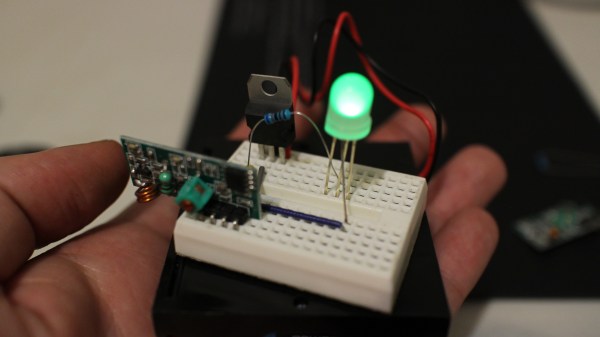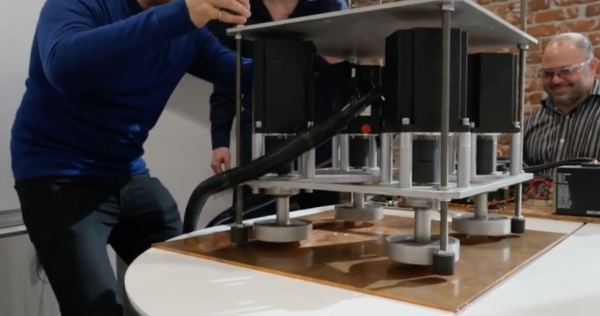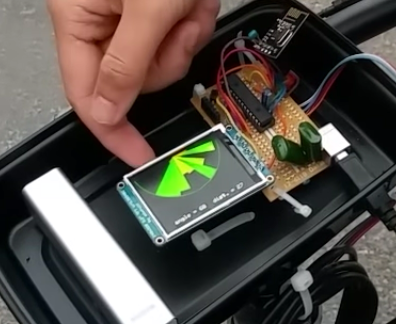[Andrew Nohawk], has noticed a spike of car break-ins and thefts — even in broad daylight — in his native South Africa. The thieves have been using remote jammers. Commercial detectors are available but run into the hundreds of dollars. He decided to experiment with his own rig, whipping up a remote jamming ‘detector’ for less than the cost of a modest meal.
Operating on the principle that most remote locks work at 433MHz, [Nohawk] describes how criminals ‘jam’ the frequency by holding down the lock button on another device, hoping to distort or outright interrupt the car from receiving the signal to lock the doors. [Nohawk] picked up a cheap 433MHz receiver (bundled with a transceiver), tossed it on a breadboard with an LED connected to the data channel of the chip on a 5V circuit, and voila — whenever the chip detects activity on that frequency, the LED lights up. If you see sustained activity on the band, there’s a chance somebody nearby might be waiting for you to leave your vehicle unattended.
If you want to know more about how these jamming attacks work, check out [Samy Kamkar’s] talk from the Hackaday SuperConference.
Continue reading “Simple And Effective Car Lock Jammer Detector”








 [Claire Chen] and [Mark Zhao] have come up with the next best thing—
[Claire Chen] and [Mark Zhao] have come up with the next best thing—








